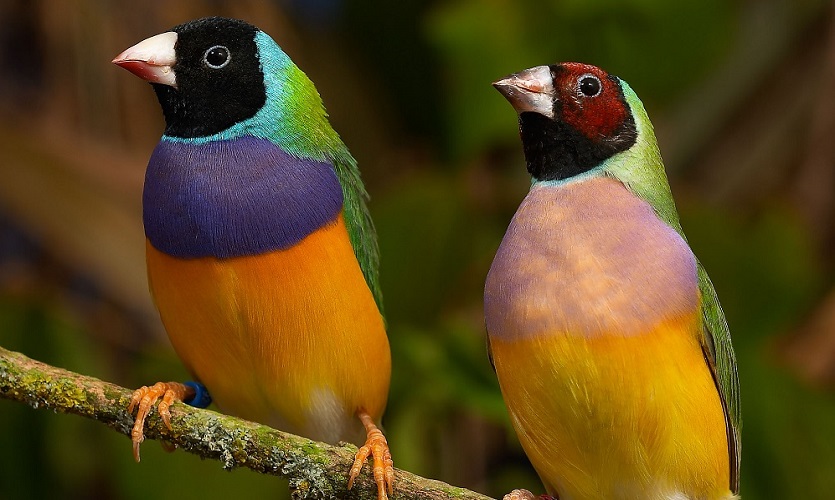The tropical birds that hang out with the right-looking guys

They say that looks are only skin deep and no measure of true success.
But in the world of rare tropical birds, hanging out with guys with the right looks can be the difference between life or death.
Gouldian finches have two morph – head colour – types: black (around 70% of the population) and red (30%), and male and females can be red or black-headed.
The birds show their personality through their head colour – black heads have been shown to be more curious while red heads are more aggressive.
Fitting in with partner
Research published today (Sept 17) in the Journal Frontiers in Ecology and Evolution, now suggests the personality combination of pairs and group could be important for the birds’ survival.
“We saw the birds resisting their natural instincts in order to fit in with their partner,” explained Dr Claudia Mettke-Hofmann, reader in animal behaviour at Liverpool John Moores University.
The scientists observed the birds’ behaviour around new feeding grounds which could be at once hazardous and/or fruitful, and found that while black-headed birds exploited home territory better they were more cautious about entering novel territory.
Pure red-headed pairings were the least concerned to enter a novel environment and show the lowest number of approach attempts before entering. But when a red-headed bird is paired with a black-headed bird, the red-head becomes more careful and takes longer to stray from ‘home-base’.
Combine virtures for common benefit
“One is better adapted to respond to changes in their familiar home range, whereas the other is better adapted to deal with unfamiliar environments. Together they are able to respond to both changes appropriately,” added Dr Mettke-Hofmann.
“I think what we see with these fascinating birds is that despite their different looks and personalities, they can combine the virtues of enterprise and caution for mutual benefit,” she said
The behaviour is significant because habitats are disappearing and how animals respond to the fragmentation of their territory will dictate their survival chances, with recent estimates suggesting that less than 2,500 Gouldian finches remain in the wild - restricted to small and isolated populations in the Australian Northern and Western Territories.
The study was conducted at LJMU by MPhil student Georgina Eccles, Dr Emily Bethell (LJMU) and Alison Greggor (San Diego Zoo).


